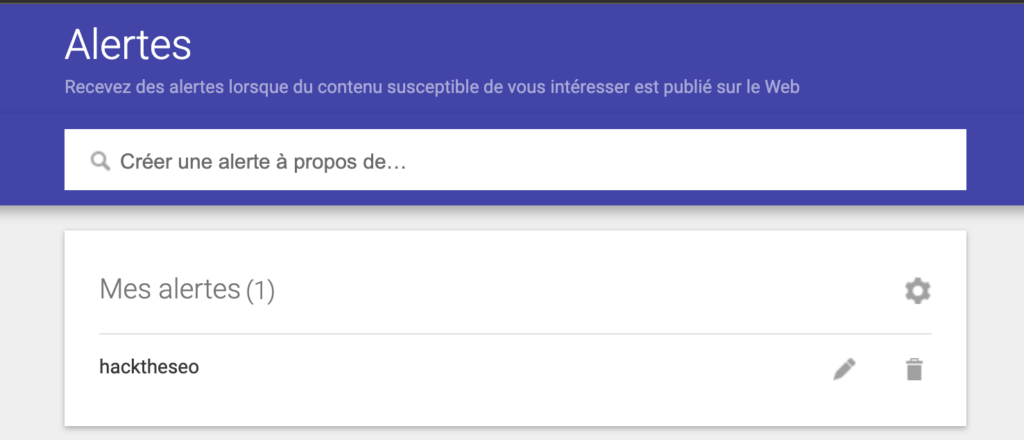The 2024 Growth Hacking SEO Guide to propel your site!
Definition and Objectives of Growth Hacking
Growth Hacking SEO combines creativity and analysis to boost your online visibility. It’s the art of using innovative strategies to improve natural referencing and attract qualified traffic.
Growth Hacking Techniques for SEO
Using Social Networks
- Active Engagement : Interact with your audience. Ask questions, respond to comments, and encourage sharing of your content.
- Viral Content : Create infographics, short videos, or useful lists. These formats are more likely to be shared, increasing your visibility.
Creation of Optimized Content
- Quality Content : Write articles that directly answer your audience’s questions. Incorporate keywords naturally.
- Image Optimization : Use attractive images with descriptive alt tags. This improves UX and SEO.
Innovative Link-Building Strategies
Tutorial: Exploiting Dead Links on Wikipedia
- Search for Dead Links : Use the query
site:wikipedia.org "your topic" "dead link"on Google. - Offer Your Content : Edit the Wikipedia page and replace the dead link with a link to your relevant content.
- Follow-up : Use tools like Ahrefs to monitor the impact on your traffic and SEO.
Tutorial: Replicating Competitors’ Backlinks
- Backlink Analysis : With SEMrush, enter a competitor’s URL to see where their backlinks come from.
- Target the Same Sites : Contact these sites to offer your content as an alternative or supplement.
Exploring Growth Hacking Techniques
The AAARRR Funnel: A Framework for Success
The AAARRR funnel, often called the “Pirate Funnel,” is at the heart of the growth hacking strategy. It breaks down the customer journey into six key stages: Awareness, Acquisition, Activation, Retention, Referral, and Revenue. For each stage, specific growth hacking tactics can be applied.

- Awareness : Use SEO to increase your brand’s visibility. This can include optimizing your content with relevant keywords and creating content that meets the search needs of your target audience.
- Acquisition : Set up targeted campaigns on social media to draw visitors to your site. Well-targeted paid ads can effectively complement your organic SEO strategy.
- Activation : Ensure that visitors take a desired action on your site, such as signing up for a newsletter. Clear CTAs (Call to Action) and incentive offers can increase conversion rates.
- Retention : Keep your users engaged with regular and relevant content. Use email marketing to remind your audience of the value you bring.
- Referral : Encourage social sharing and recommendations. Referral programs or incentives for reviews can turn satisfied users into brand ambassadors.
- Revenue : Optimize purchase journeys and test different pricing strategies to maximize revenue. SEO can help attract qualified traffic likely to convert.
5 Quick Wins for Growth Hacking
1. Detecting New Opportunities
- Second Page Positions : Identify the keywords for which your site ranks in 11th to 15th position and optimize these pages to boost their ranking.
- First Page CTR : Improve the CTR for well-ranked keywords by adjusting title tags and meta descriptions to make them more appealing.
- Google Alert on Your Brand : Use Google Alerts to monitor mentions of your brand and create content in response to these mentions to improve engagement and visibility.
- Each mention is an opportunity to create responsive content or to strengthen relationships with your audience. Whether it’s responding to a critique or thanking a user for a positive comment, this strategy improves the engagement and visibility of your brand.

2. Automated Page Creation (for the more experienced)
- Develop automated pages that meet specific needs of your audience, using tools like IFTTT or Zapier to automate the process. Personally, I’ve never tested but I’m familiar with the process, I think we’ll take a closer look at this technique 🙂
3. Automated Content Creation via Content Spinning
- Use content spinning to generate unique content on a large scale. However, ensure that the content remains high quality and relevant to avoid Google penalties.
4. Optimizations of Your SEO Tags
- Optimize your title tags and meta descriptions using formulas that have proven their effectiveness in increasing CTR, like including action verbs and clear benefits.
- Tip use the data from Google Search Console!

5. Link Building: Broken Links
- Identify and replace broken links on high-authority sites, like Wikipedia, with links to your own content, to improve your backlink profile.
On-Page and Off-Page Optimization
On-page optimization includes your site’s structure, meta tags, and content quality. Off-page optimization focuses on backlinking strategies to build your domain’s authority.
Analysis and Replication of Competitors’ Strategies
Use analysis tools to understand why your competitors are succeeding. Adapt these strategies to your own content.
Measurement and Continuous Improvement
SEO is an evolving process. Use Google Analytics to measure your performance and adjust your strategies accordingly.
Content Extension to Deepen the Article
The Importance of Technical SEO
A technically optimized site is essential for SEO. This includes loading speed, mobile compatibility, and a clear site architecture.
Tutorial: Improving Loading Speed
- Analyze Your Site : Use Google PageSpeed Insights to identify speed issues.
- Optimize Images : Compress images without losing quality to reduce their file size.
- Minimize Code : Reduce CSS, JavaScript, and HTML. Use tools like Minifier or UglifyJS.
The Power of Long-Form Content
Long, detailed articles are excellent for SEO. They allow for in-depth exploration of a topic, incorporation of more keywords, and generation of more engagement.
Tutorial: Creating Long-Form Content
- Choose a Broad Topic : Select a topic that merits detailed exploration.
- Structure Your Content : Divide your article into sections with subheadings for better readability.
- Include Multimedia Elements : Add images, videos, and infographics to enrich the content and improve engagement.
Like this 🙂
Advanced Link-Building Strategies
Beyond dead links on Wikipedia, consider guest blogging, partnerships with influencers, and active participation in forums and online communities to build quality backlinks.
Tutorial: Effective Guest Blogging
- Identify Target Sites : Look for blogs in your niche with a good domain authority.
- Propose Relevant Topics : Contact the editors with article ideas that bring value to their audience.
- Write Quality Content : Ensure your guest article is informative, well-written, and naturally integrates links to your site.
Tracking and Analyzing Results
Tracking results is crucial to adjust and improve your Growth Hacking SEO strategies. Analyze your traffic data regularly, the ranking of your keywords, and the behavior of users on your site.
Tutorial: Using Google Analytics
- Set Up Google Analytics : Ensure that Google Analytics is properly set up on your site.
- Monitor Organic Traffic : Analyze organic traffic trends to assess the effectiveness of your SEO efforts.
- Evaluate User Behavior : Use data on time spent on site, pages per session, and bounce rate to understand how visitors interact with your content.
Conclusion
Growth Hacking SEO is your passport to increased online visibility. By adopting these strategies, you can transform your digital presence and achieve your growth goals.
FAQ – Growth Hacking SEO
Growth Hacking SEO is a strategy that combines innovative growth hacking techniques with SEO principles to improve online visibility, attract qualified traffic and accelerate the organic growth of a website.
How can social media improve SEO?
Social media can improve SEO by increasing content visibility, encouraging sharing (which can generate natural backlinks), and increasing traffic to the site, which signals to Google that the content is relevant and popular.
How important is quality content for SEO?
Quality content is crucial for SEO because it answers user questions, naturally incorporates relevant keywords, improves visitor engagement, and increases the chances of being shared and linked to, which builds site authority .
How to exploit dead links on Wikipedia for SEO?
Exploiting dead links on Wikipedia involves finding pages with broken links relevant to your content, then editing the Wikipedia page to replace the dead link with a link to your site, increasing your authority and visibility.
What are the best practices for on-page and off-page optimization?
For on-page optimization, focus on content quality, meta tags, and site structure. For off-page optimization, develop a solid backlinking strategy by obtaining links from high-authority sites and actively participating in online communities.
Why is it important to measure and continually improve your SEO strategy?
Measuring and continually improving your SEO strategy is essential as the digital landscape and search algorithms are constantly evolving. This allows you to adjust your tactics to stay competitive and achieve your growth goals.
What tools are recommended for tracking SEO performance?
Google Analytics and Google Search Console are essential for tracking SEO performance, including organic traffic, keyword rankings, and user behavior on your site.
